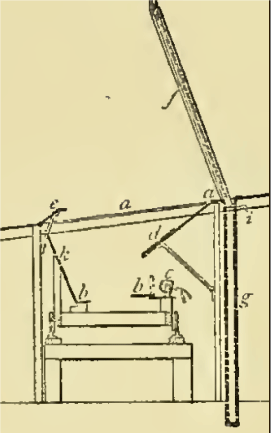My recent post on the Pepper-Dircks ghost didn’t include even close to all of the interesting tidbits it could have! There are so many things to learn from the story of the ghost, including some lessons about optics.
For example: in my post, I included two illustrations of the illusion at work from sources of that era. One came from the 1868 book The World of Wonders…
… and the other came from an 1877 edition of Harper’s Magazine.
The images are so similar that I’m guessing the latter was based off of the former. However, both of them are wrong! They incorrectly show how the ghost works and how it would appear in the configuration as shown.
So what’s the problem? If you like, take a moment to look at the image or images above and see if you can work it out for yourself! Then read on below…
For those who did not read my earlier post, the Pepper-Dircks ghost is an illusion that takes advantage of a very clear piece of glass. Most glass is at least partly reflective, so an illuminated ghost actor produces a virtual image of a ghost by the ordinary process of reflection.

Illustration of a “ghostly” reflection in a pane of glass. Several rays of light reflected off of the glass, and their trajectory as apparent to the observer, have been drawn.
Another way to think about it, and perhaps an easier way to draw it in light of what we will discuss next, is that each point of the image appears at the same perpendicular distance on the other side of the mirror, as illustrated below.
This technique allows us to easily draw the position of the image, but it doesn’t allow us to determine what parts of the image will be visible from different observation locations, as we will see.
Now let’s consider the illusion as depicted in the 1900s illustrations above. If I try and draw something comparable to theirs, I get the following:
There are, in fact, two problems with this depiction of the illusion. First, the mirror image is tilted forward at a ridiculous angle. The reason for this is pretty obvious: the actor is effectively tilted head-first towards the glass; naturally the mirror image would also have this tilt! The second problem, less obvious, is that the image will be cut off for a significant portion of the audience. People looking down on the figure from a high vantage point to the right would be able to see the entire ghost, but much of the audience would only see a fraction. One could move the actor much more to the right, to include more of their body in the image for all to see, but this would require a really large amount of horizontal space. Also, one can see from the 1800s illustrations at the beginning of the post that our illustration is roughly how they envisioned it: if performed as drawn, the ghost would be only partly present!
We can make this more explicit if we include the “light blocker” that is used to keep the light used to illuminate the ghost from directly shining on the audience.
Pepper resolved these difficulties by placing the actor in a reclining position in their hidden nook below the stage. His original illustration of the entire stage for a ghost performance is shown below.
The detail is in the lower right corner, and I blow it up in the next image.
The “ghost” reclines on the platform on the left, in position k, and their image is reflected in the mirror f. The light blocker d does not cut off the image of the ghost at all.
Let me now try and draw a decent Pepper-Dircks illusion. It is not necessarily an easy task: Pepper himself apparently adjusted the image by inspection, with assistants, rather than by using any set mathematical formula, as he notes in his True History:
The glass is adjustable and it is readily adjusted to the proper inclination, by having a person in the pit and another in the gallery to inform the party who is adjusting the glass when they see the image correctly.
Here is my attempt at it:
This still isn’t a perfect realization, as I have the actor’s head above the level of the stage. However, the figure is upright, and the reflection will be visible in full from pretty much anyone in an audience to the right at an elevation above stage level. (This is another problem with the 19th century images: they show an audience at the same level as the ghost actor, and it doesn’t seem clear that any of them would see the illusion!)
The use of a reclining figure was useful in allowing the illusion to be performed in existing theaters, but it added a bit of an unnatural appearance to the ghost. As Dircks himself lamented in his own book, The Ghost!,
So far as the public at present knows, the invention is supposed to be capable of producing sloping figures only— spectres reclining in the air like ladders against a wall.
Dircks’ version of the illusion would use a complete hidden stage below the audience and a vertical glass plate, allowing the spectral actors to walk around freely; Dircks’ illustration is shown below. It is definitely more effective than Pepper’s adaptation, and is what is used in the Haunted Mansion to this day, but requires much more specialized preparation.
I don’t mean for this post to mock or criticize the 19th century artists that drew the beginning illustrations. If anything, I use this post to point out that even seemingly simple optical inventions can be subtle to implement and understand!










